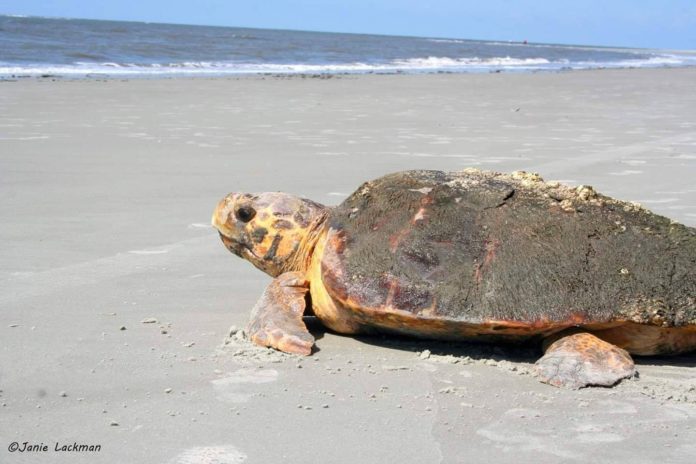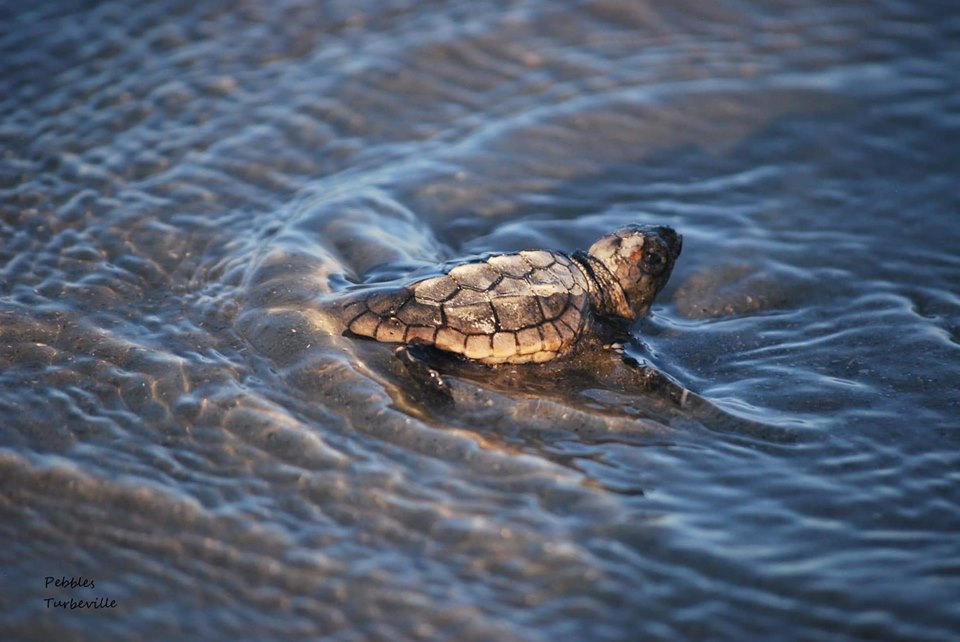
It’s been a record breaking sea turtle season here in the Palmetto State, with beaches all over SC getting into the fun!
With several weeks remaining in nesting season, sea turtles have laid the most nests on South Carolina beaches since record keeping began in the early 1980s, according to the S.C. Department of Natural Resources.
As of July 15th, 7,430 nests have been counted in ground surveys along the SC coast. That tops the record 6,446 nests counted in all of 2016…setting a new sea turtle nest record in SC.
SCDNR oversees a network of volunteers who help staff count nests. Volunteers and staff from Hunting and Harbor islands have reported very high nest counts and beaches all over the Lowcountry and the rest of the state are reporting the same.
As of the 15th, Hunting Island State Park has seen 136 nests; Fripp Island has had 145; Daufuskie Island has seen 99; Edisto has had 323; Hilton Head has seen 420; Pritchards Island has seen 92 nests; and Harbor Island has enjoyed 87 nests so far this season.
Even little Coffin Point Beach on St. Helena Island has had a record year with 25 nests.
“This has been a tremendous season so far, and we are grateful for our dedicated network of volunteers in South Carolina who make this large-scale conservation effort happen,” said biologist Michelle Pate, director of SCDNR’s sea turtle program.
The 2019 season began just four days earlier than usual with a nest laid on Hilton Head by a Kemp’s ridley, the world’s most endangered sea turtle.
The first hatch of the 2019 season occurred in Hilton Head on June 27th.
Day nesters frequently seen
A high number of ‘day nesters,’ or female sea turtles that come ashore to nest in broad daylight instead of more typical darkness, has also been documented. The increased number of day nesters could be because of dry sand conditions, which can hinder a sea turtle’s efforts to dig a nest cavity, or harassment during night emergence, the release said.
“Day nesters tend to be pretty rare, isolated events,” Pate said.
Record-breaking years have become increasingly common across the Southeast recently, according to the release, and sea turtle biologists are optimistic that the trend signals the beginning of recovery for loggerhead sea turtles, whose nests make up the vast majority of nests here in the Palmetto State. Loggerhead turtles were listed as threatened under the Endangered Species Act in 1978.
State and federal law prohibits the harm of or interference with sea turtles or their nests. Harassment includes any activity that changes a sea turtle’s natural behavior, ranging from approaching nesting females to take photos to ‘assisting’ hatchlings on their path to the ocean.
“Sea turtles are wild animals,” Pate said. “Let nature take its course.”

Sea Turtle Nesting Season Reminders
- Report all sick/injured/dead sea turtles and nest disturbances to the SCDNR at 1-800-922-5431 so that staff/volunteers can respond as soon as possible.
- Respect boating laws and boat cautiously, especially in small tidal creeks where sea turtles like to feed. Boat strikes have emerged as the leading cause of death for sea turtles in South Carolina.
- Keep artificial lights off the beach at night during nesting season – this includes beachfront property lights and flash photography, which can disorient nesting mothers and hatchlings.
- Always respect sea turtles by observing them from a distance on the beach. Individuals that violate federal law by harming or interfering with sea turtles or their nests can be subject to civil penalties of up to $25,000 and up to a year’s imprisonment.
- Keep our beaches and ocean clean by avoiding single-use plastics. Plastic bags and balloons are among the most common trash items found on South Carolina beaches and can cause injury or death when sea turtles mistake them for food.
- Promote and support the SCDNR program for continued conservation of sea turtles in South Carolina.









